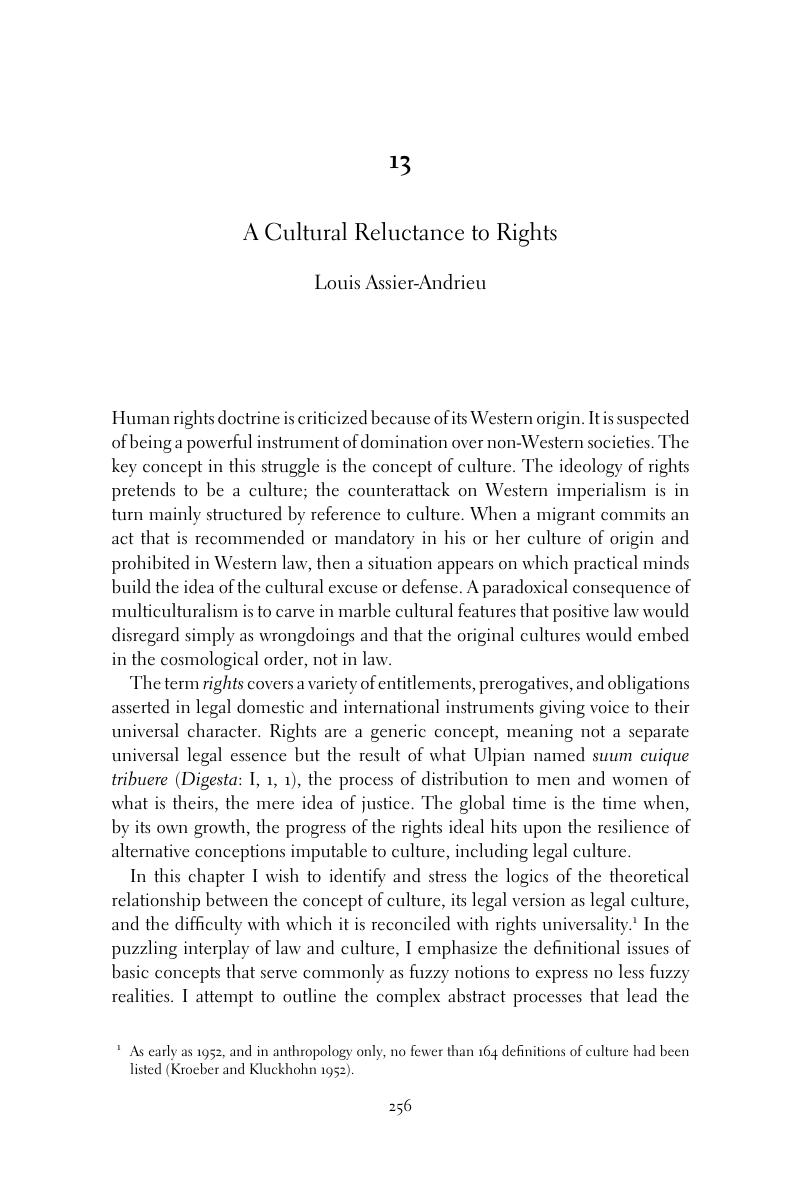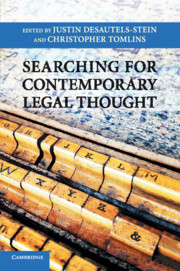Book contents
- Searching for Contemporary Legal Thought
- Reviews
- Searching for Contemporary Legal Thought
- Copyright page
- Contents
- Contributors
- Acknowledgments
- Introduction: Searching for Contemporary Legal Thought: History, Image, and Structure
- Part I Histories of the Legal Contemporary
- Part II Images of the Legal Contemporary?
- 10 International Law as “Global Governance”
- 11 Recasting Labor Standards for the Contemporary: International versus Transnational Frameworks at the ILO
- 12 An Effective and Affective History of Colonial Law
- 13 A Cultural Reluctance to Rights
- 14 The Scene of Nature
- 15 Registering Interests: Modern Methods of Valuing Labor, Land, and Life
- 16 Market Anti-naturalisms
- 17 Neoliberalism and the New International Economic Order: A History of “Contemporary Legal Thought”
- 18 …and Law?
- Part III Structures of the Legal Contemporary
- Index
- References
13 - A Cultural Reluctance to Rights
from Part II - Images of the Legal Contemporary?
Published online by Cambridge University Press: 28 December 2017
- Searching for Contemporary Legal Thought
- Reviews
- Searching for Contemporary Legal Thought
- Copyright page
- Contents
- Contributors
- Acknowledgments
- Introduction: Searching for Contemporary Legal Thought: History, Image, and Structure
- Part I Histories of the Legal Contemporary
- Part II Images of the Legal Contemporary?
- 10 International Law as “Global Governance”
- 11 Recasting Labor Standards for the Contemporary: International versus Transnational Frameworks at the ILO
- 12 An Effective and Affective History of Colonial Law
- 13 A Cultural Reluctance to Rights
- 14 The Scene of Nature
- 15 Registering Interests: Modern Methods of Valuing Labor, Land, and Life
- 16 Market Anti-naturalisms
- 17 Neoliberalism and the New International Economic Order: A History of “Contemporary Legal Thought”
- 18 …and Law?
- Part III Structures of the Legal Contemporary
- Index
- References
Summary

- Type
- Chapter
- Information
- Searching for Contemporary Legal Thought , pp. 256 - 274Publisher: Cambridge University PressPrint publication year: 2017

